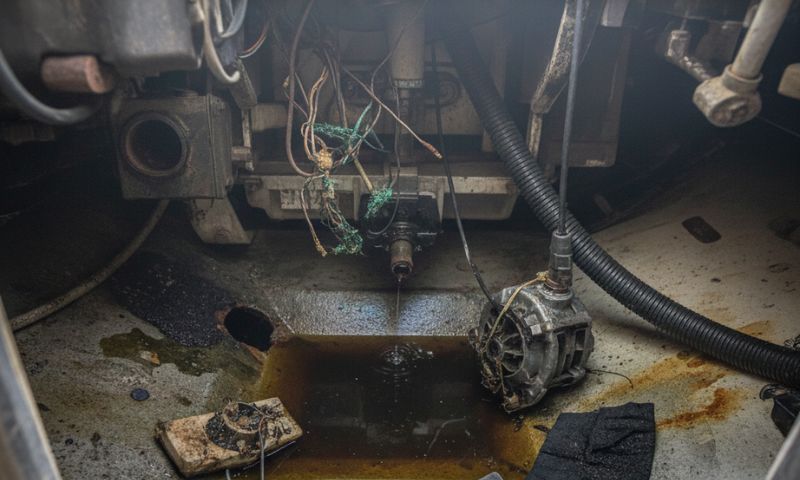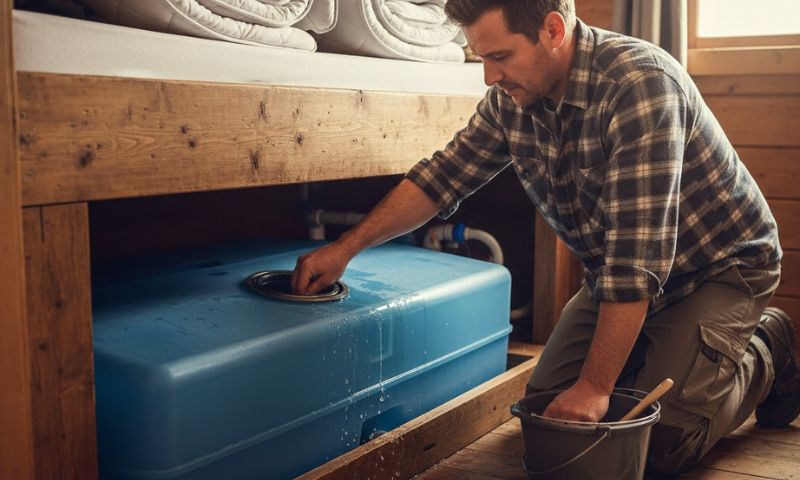Sailboats live close to the waterline—sometimes a little too close. A healthy bilge is your last line of defense against leaks, spray, rain, and the day-to-day slosh of life under sail. In this practical guide, we’ll explore the most frequent bilge water problems owners encounter and how to fix them for good. The aim is a dry, clean, and reliable bilge that lets you focus on wind and way, not on pumps and puddles.
1) Standing Water That Never Quite Disappears
A thin, stubborn pool often traces back to clogged limber holes, uneven bilge floors, or trapped pockets under tanks and stringers. Start by rodding out limber holes with a flexible pick and flushing with fresh water. If the bilge geometry leaves low spots a pump can’t reach, add a small pickup strainer at the lowest point or fit a secondary “polishing” pump with a fine screen. Finish by sponging dry and noting where water returns—this helps you track down the real source.
2) Bilge Pump Runs but Moves Little or No Water
If the motor hums yet discharge is feeble, suspect a blocked strainer, fouled impeller, kinked hose, or marine growth in the outlet. Remove and rinse the strainer, inspect the impeller (on diaphragm or centrifugal units as applicable), and straighten any hose bends tighter than a gentle radius. Long, undersized discharge runs also sap performance—match hose ID to the pump’s spec and minimize vertical lift where possible.
3) Automatic Pump Never Kicks In (Float or Sensor Issues)
A sticky float switch, debris around the hinge, or a mis-leveled solid-state sensor can keep the system asleep while water rises. Clean the switch area, verify the switch throws freely, and mount it on a flat pad away from sloshing. Test by lifting the float or bridging the sensor per the manufacturer’s instructions. If in doubt, replace the switch and add a high-water alarm so you’ll hear about failures before they become emergencies.
4) Pump Cycles, but Water Sneaks Back (Backflow After Shutdown)
When the pump stops, water in the discharge hose can drain back into the bilge. A high “anti-siphon” loop well above the waterline reduces this, and a quality non-return valve can help—provided it’s accessible and maintained. Avoid burying check valves where you can’t inspect them; they can clog with debris. It’s normal to see a small return slug—size your pump and run time to overcome it.
5) Airlocks and Mysterious No-Discharge Events
Air trapped at an elbow or in a rising loop can keep the impeller spinning without moving water. Gentle hose routing with a continuous rise to the outlet helps, and some setups benefit from a small vent at the apex (follow the pump maker’s guidance). Prime the line by filling the hose with water during commissioning, then verify steady flow at the through-hull.
6) Drips from the Shaft Seal or Stuffing Box Add Up
A “few drips per minute” from traditional packing might sound harmless, but underway those drips become liters per hour. Inspect the stuffing box at the dock and after a motor sail; adjust the packing nut so it runs cool and barely weeps. If you prefer a drier bilge, consider a dripless shaft seal, serviced per schedule and installed with a proper vent or bleed line to avoid air ingestion.
7) Deck, Hatch, and Cockpit Leaks Feeding the Bilge
Rain and green water don’t always announce themselves topside; they travel invisibly along headliners and stiffeners before appearing in the bilge. Look for telltale water tracks, stained plywood, or corroded fasteners. Reseat deck hardware with marine sealant, renew hatch and portlight gaskets, and keep cockpit scuppers clear. Stopping topside ingress is often the fastest cure for recurring bilge water problems.
8) Oil or Fuel Sheen in the Bilge
A rainbow sheen points to a spill from the engine, a failed fuel sender gasket, or a sloppy filter change. Track the source with absorbent pads placed under likely culprits, then fix the leak before cleaning the bilge. Use oil-only absorbent socks and pads to collect contamination; dispose of them legally at a facility that accepts oily waste. Never pump oily water overboard—fines and environmental harm aren’t worth the shortcut.
9) Persistent Odors, Slime, and Microbial Growth
Warm, stagnant bilge water becomes a petri dish. After removing standing water, scrub with a biodegradable bilge cleaner and rinse thoroughly. Improve airflow in the sump area, keep sponges and pads dry between uses, and avoid food or organic debris entering the bilge. If you add treatments, use products designed for marine bilges and follow labels—masking odors without removing the source guarantees the smell will return.
10) Corroded Wiring and Failed Connections in the Bilge
Saltwater mist and intermittent wetting wreak havoc on electricals. All bilge wiring should be tinned marine-grade with heat-shrink terminals, connections positioned as high as practical, and fuses or breakers mounted well above anticipated water levels. Create drip loops, secure cables away from pump intakes, and inspect annually for greened copper or stiff insulation. Many “mystery” pump failures are actually wiring problems waiting to happen.
Quick Signs Your Bilge Needs Attention
Pump cycles more often than usual, or runs longer per cycle.
New noises, weak discharge stream, or air spitting from the outlet.
Fresh water after rain, salt water after sailing to weather, or a new fuel/oil sheen.
Keep This in Your Bilge Toolkit
Absorbent pads and socks, flexible limber-hole pick, hose clamps, spare float switch, inline fuse, heat-shrink terminals, and a compact inspection mirror.
Preventive Routine for Sailboats
Prevention is the cheapest refit you’ll ever do. Add a monthly “bilge hour” to your maintenance calendar: sponge the sump dry, clean strainers, test the automatic switch and alarm, and run fresh water through the system. Log what you find—patterns matter. When you head offshore or expect heavy weather, confirm every hose clamp is doubled and tight, discharge loops are high, and the backup pump and alarm both work. Addressing small bilge water problems early keeps them from becoming big, wet stories later.





Leave a comment
This site is protected by hCaptcha and the hCaptcha Privacy Policy and Terms of Service apply.